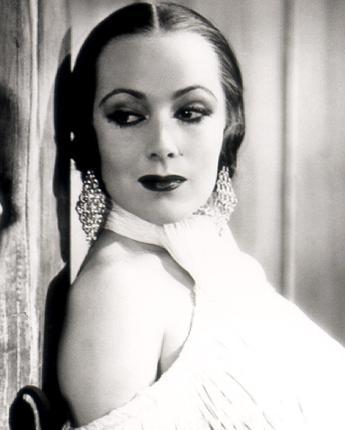Ficheiro:Dolores Del Rio in - In Caliente.jpg
Dolores_Del_Rio_in_-_In_Caliente.jpg (345 × 430 píxeis, tamanho: 30 kB, tipo MIME: image/jpeg)
|
|
Esta imagem provém do Wikimedia Commons, um acervo de conteúdo livre da Wikimedia Foundation que pode ser utilizado por outros projetos.
|
Descrição do ficheiro
| DescriçãoDolores Del Rio in - In Caliente.jpg | |
| Data | |
| Origem | http://www.doctormacro.com/Images/Del%20Rio,%20Dolores/Del%20Rio,%20Dolores%20(In%20Caliente)_01.jpg |
| Autor | Warner Brothers. Photographer not credited. Studio publicity. |
Licenciamento
| Public domainPublic domainfalsefalse |
Este trabalho está em domínio público porque foi publicado nos Estados Unidos entre 1929 e 1963, com um aviso de direito autoral, e seu direito autoral não foi renovado. A menos que seu autor esteja morto por vários anos, não é do domínio público nos países ou áreas que não se aplica a regra do curto prazo para as obras dos E.U.A, como o Canadá (70 apm), China (50 apm, com exceção de Hong Kong e Macau), Alemanha (70 apm), México (100 apm), Suíça (70 apm), e de outros países com tratados individuais. Veja Commons:Hirtle chart para maiores explicações.
العربية ∙ Deutsch ∙ English ∙ español ∙ français ∙ galego ∙ italiano ∙ 日本語 ∙ 한국어 ∙ македонски ∙ português ∙ português do Brasil ∙ русский ∙ sicilianu ∙ slovenščina ∙ українська ∙ 简体中文 ∙ 繁體中文 ∙ +/− |
Copyright details
Additional source information:
This is a publicity photo taken to promote a film actor. As stated by film production expert Eve Light Honthaner in The Complete Film Production Handbook, (Focal Press, 2001 p. 211.):
- "Publicity photos have traditionally not been copyrighted. Since they are disseminated to the public, they are generally considered public domain, and therefore clearance by the studio that produced them is not necessary."[1]
Creative Clearance offers similar advice for older publicity stills but distinguishes "Publicity Photos (star headshots)" from "Production Stills (photos taken on the set of the film or TV show during the shooting)". It says newer publicity stills may contain a copyright, and production stills "must be cleared with the studio."[2]
Nancy Wolff, includes a similar explanation:
Legal expert on the use of photographic images, Nancy Wolff, includes a similar explanation:
- There is a vast body of photographs, including but not limited to publicity stills, that have no notice as to who may have created them. . .(The Professional Photographer's Legal Handbook By Nancy E. Wolff, Allworth Communications, 2007, p. 55.)
These photographs came from a photo archive of entertainment industry publicity pictures, historic still images widely distributed by the studios to advertise and promote their then new releases. While not considered valuable at the time, avid collectors have created complete archives by salvaging and cataloging movie and television photographs, preserving a significant facet of American culture. These archives are a valuable cache for publishers who rely on these archives as a resource for entertainment material."[3]
Film industry author Gerald Mast, in Film Study and the Copyright Law (1989) p. 87, writes:
Film industry expert Gerald Mast explains how the new 1989 copyright revisions only protected publicity works that complied with all earlier requirements in addition to filing a copyright registration within 5 years of first publication:
- "According to the old copyright act, such production stills were not automatically copyrighted as part of the film and required separate copyrights as photographic stills. The new copyright act similarly excludes the production still from automatic copyright but gives the film's copyright owner a five-year period in which to copyright the stills. Most studios have never bothered to copyright these stills because they were happy to see them pass into the public domain, to be used by as many people in as many publications as possible."[4]
Kristin Thompson, committee chairperson of the Society for Cinema and Media Studies writes in the conclusion of a 1993 conference with cinema scholars and editors, that they "expressed the opinion that it is not necessary for authors to request permission to reproduce frame enlargements. . . [and] some trade presses that publish educational and scholarly film books also take the position that permission is not necessary for reproducing frame enlargements and publicity photographs."[5]
References
- ↑ Honathaner, Eve Light. The Complete Film Production Handbook, Focal Press, (2001) p. 211
- ↑ Creative Clearance. Photography Clearance. Clearance Guidelines for Producers. Archived from the original on 2013-02-12. Retrieved on 4 May 2011.
- ↑ Wolff, Nancy E. The Professional Photographer's Legal Handbook, Allworth Communications, 2007 p. 55
- ↑ Mast, Gerald. "Film Study and the Copyright Law", from Cinema Journal, Winter 2007, pp. 120-127
- ↑ Thompson, Kristin. [1] "Report of the Ad Hoc Committee of the Society For Cinema Studies, "Fair Usage Publication of Film Stills" "Society for Cinema and Media Studies", 1993 conference
Legendas
Elementos retratados neste ficheiro
retrata
image/jpeg
Histórico do ficheiro
Clique uma data e hora para ver o ficheiro tal como ele se encontrava nessa altura.
| Data e hora | Miniatura | Dimensões | Utilizador | Comentário | |
|---|---|---|---|---|---|
| atual | 03h13min de 2 de julho de 2011 |  | 345 × 430 (30 kB) | Hispania |
Utilização local do ficheiro
Não há nenhuma página que use este ficheiro.
Utilização global do ficheiro
As seguintes wikis usam este ficheiro:
- cy.wikipedia.org
- en.wikipedia.org
- es.wikipedia.org
- fr.wikipedia.org
- ja.wikipedia.org
- nl.wikipedia.org
- www.wikidata.org
Metadados
Este ficheiro contém informação adicional, provavelmente adicionada a partir da câmara digital ou scanner utilizada para criar ou digitalizar a imagem. Caso o ficheiro tenha sido modificado a partir do seu estado original, alguns detalhes poderão não refletir completamente as mudanças efetuadas.
| Orientação | Normal |
|---|---|
| Resolução horizontal | 72 ppp |
| Resolução vertical | 72 ppp |
| Software utilizado | Adobe Photoshop 7.0 |
| Data e hora de modificação do ficheiro | 21h41min de 14 de novembro de 2005 |
| Espaço de cores | Cor não calibrada |


